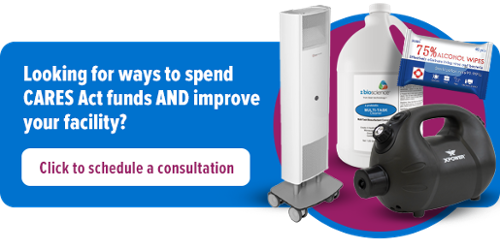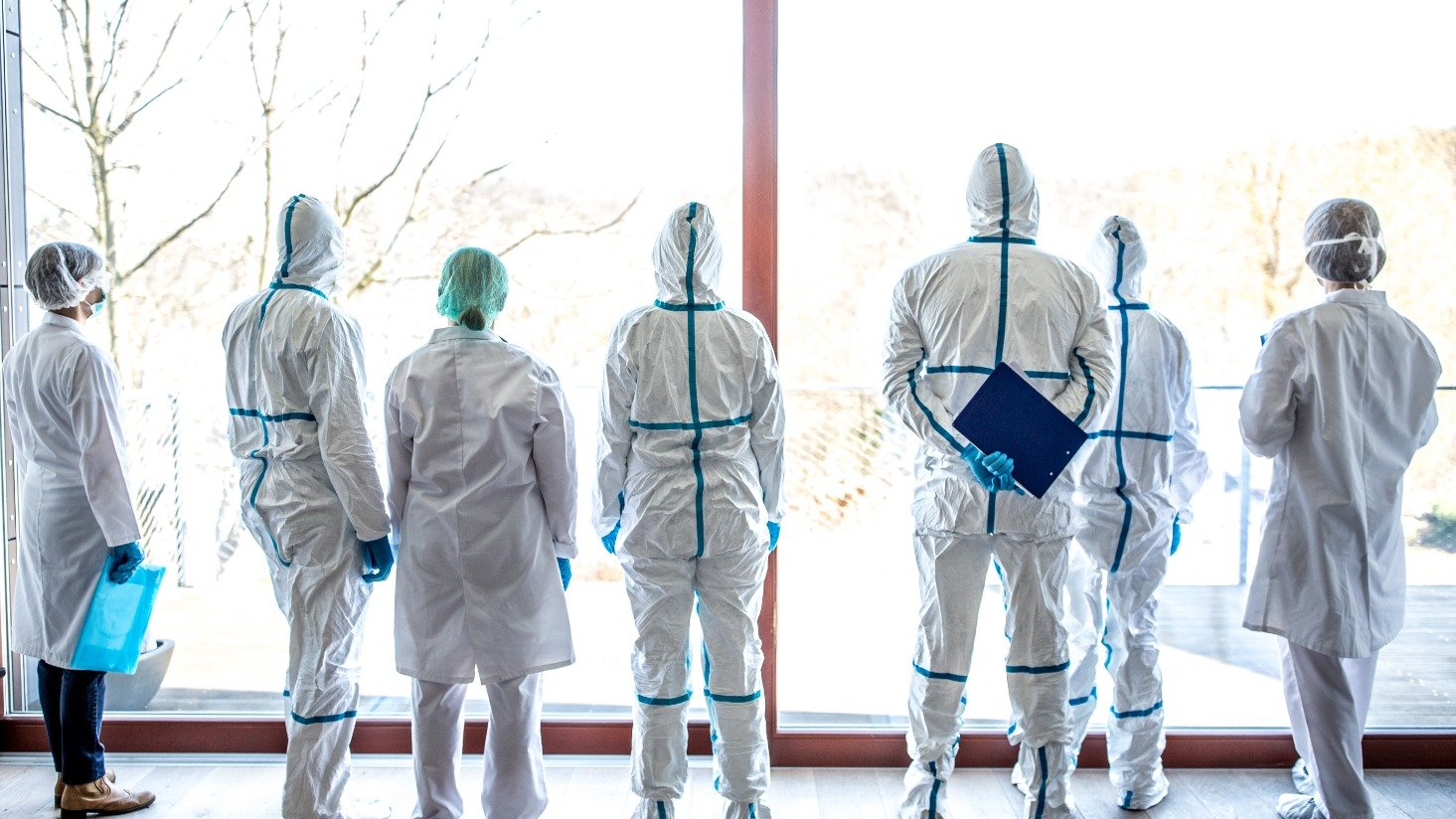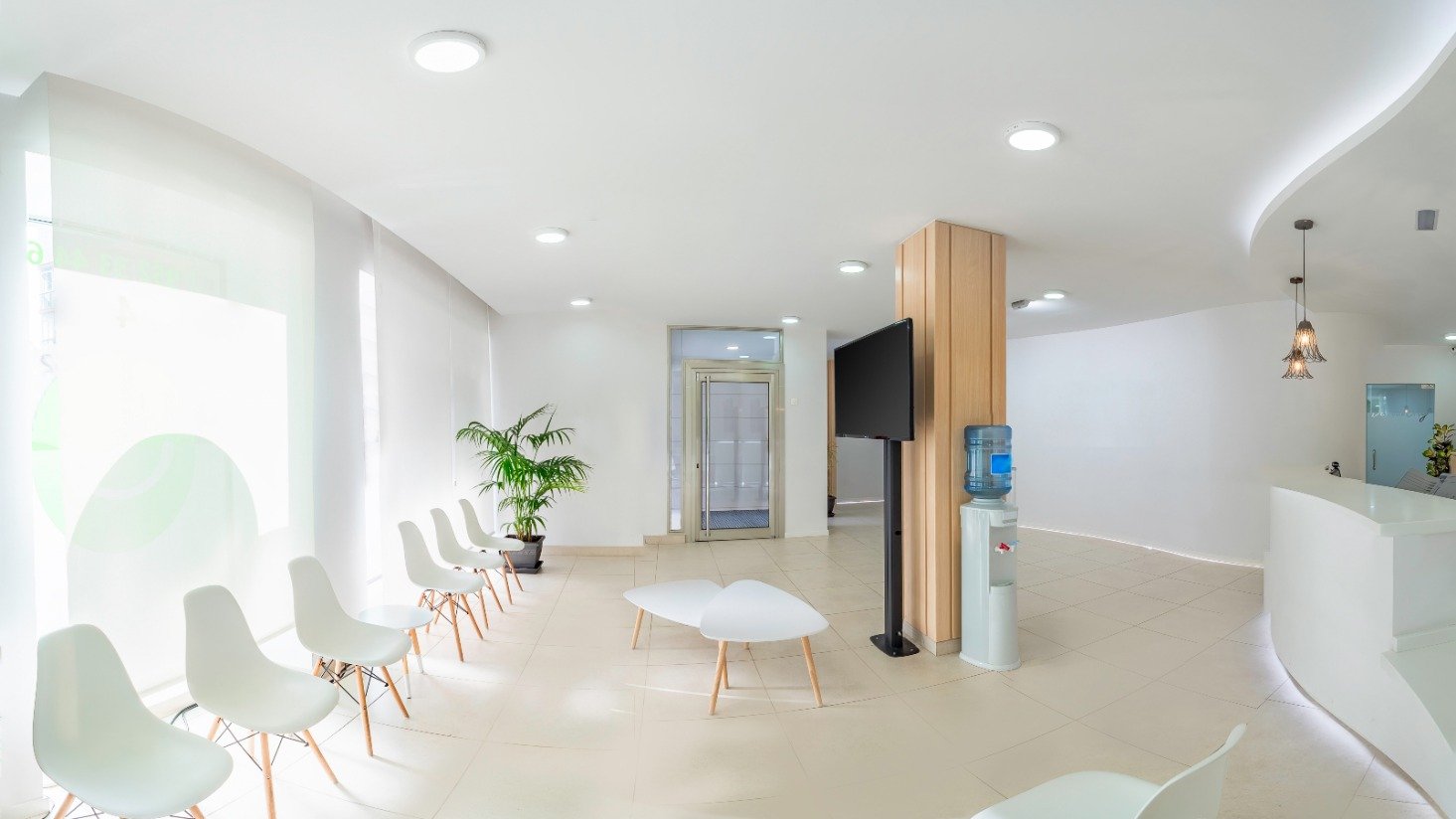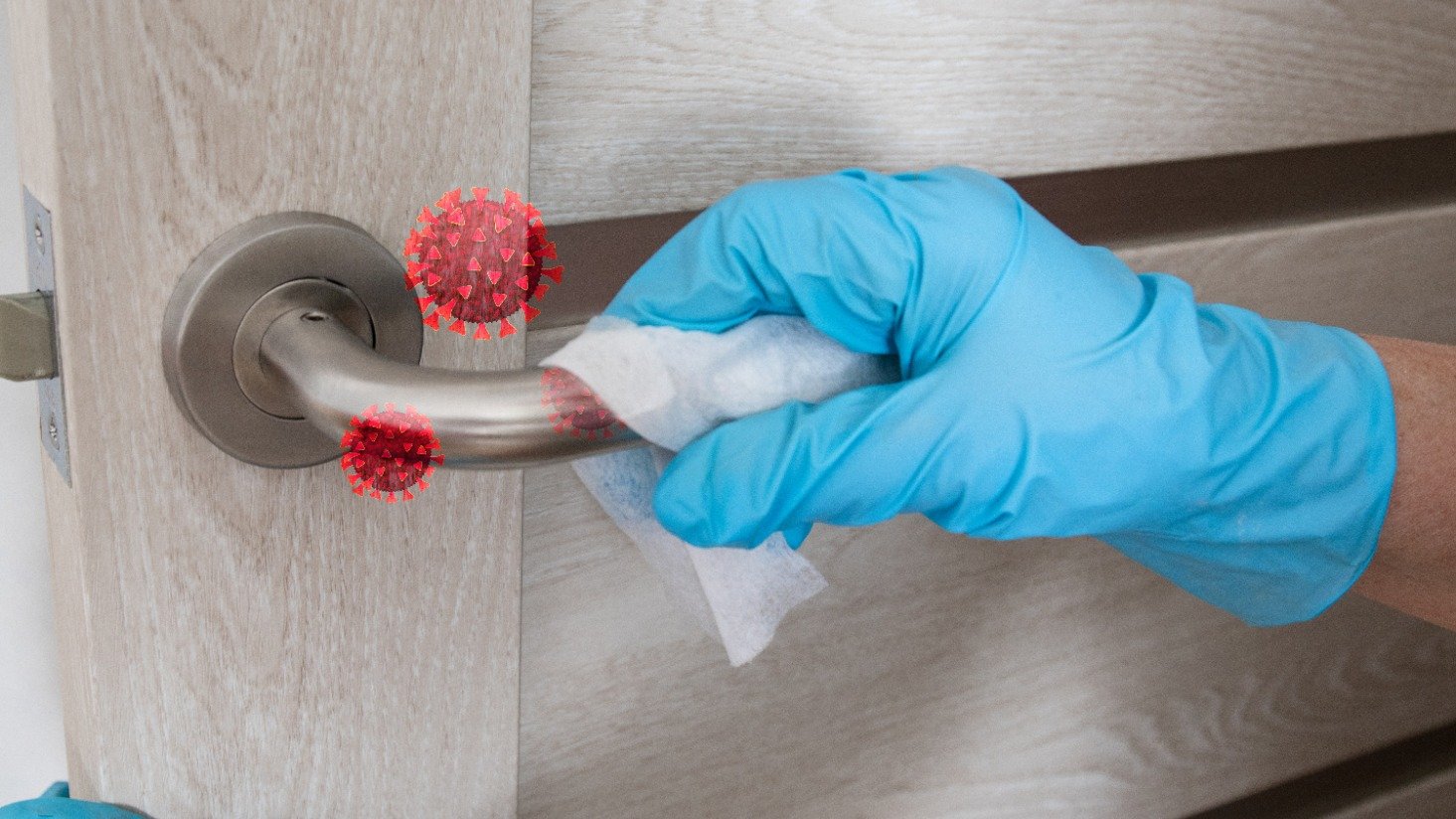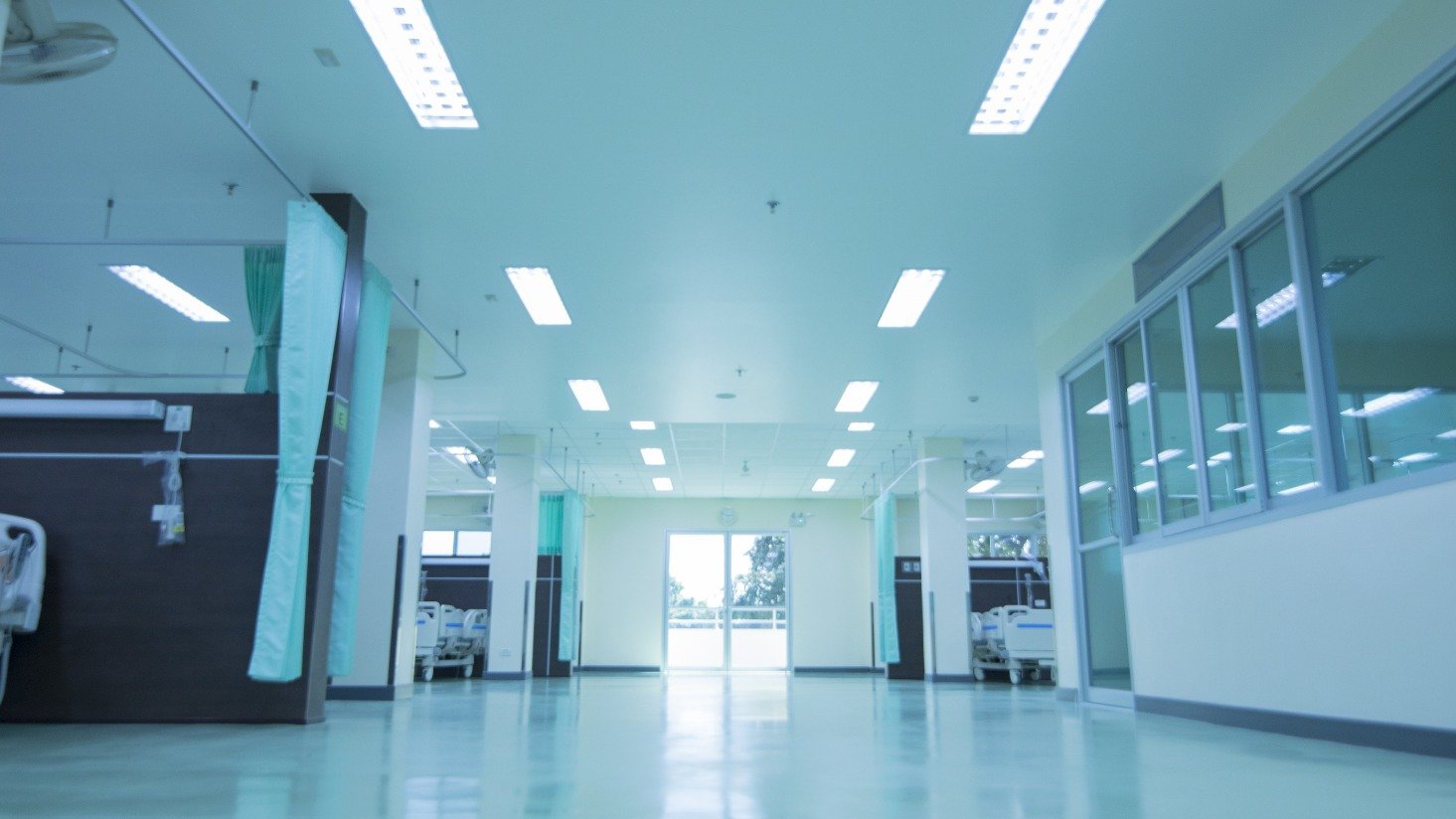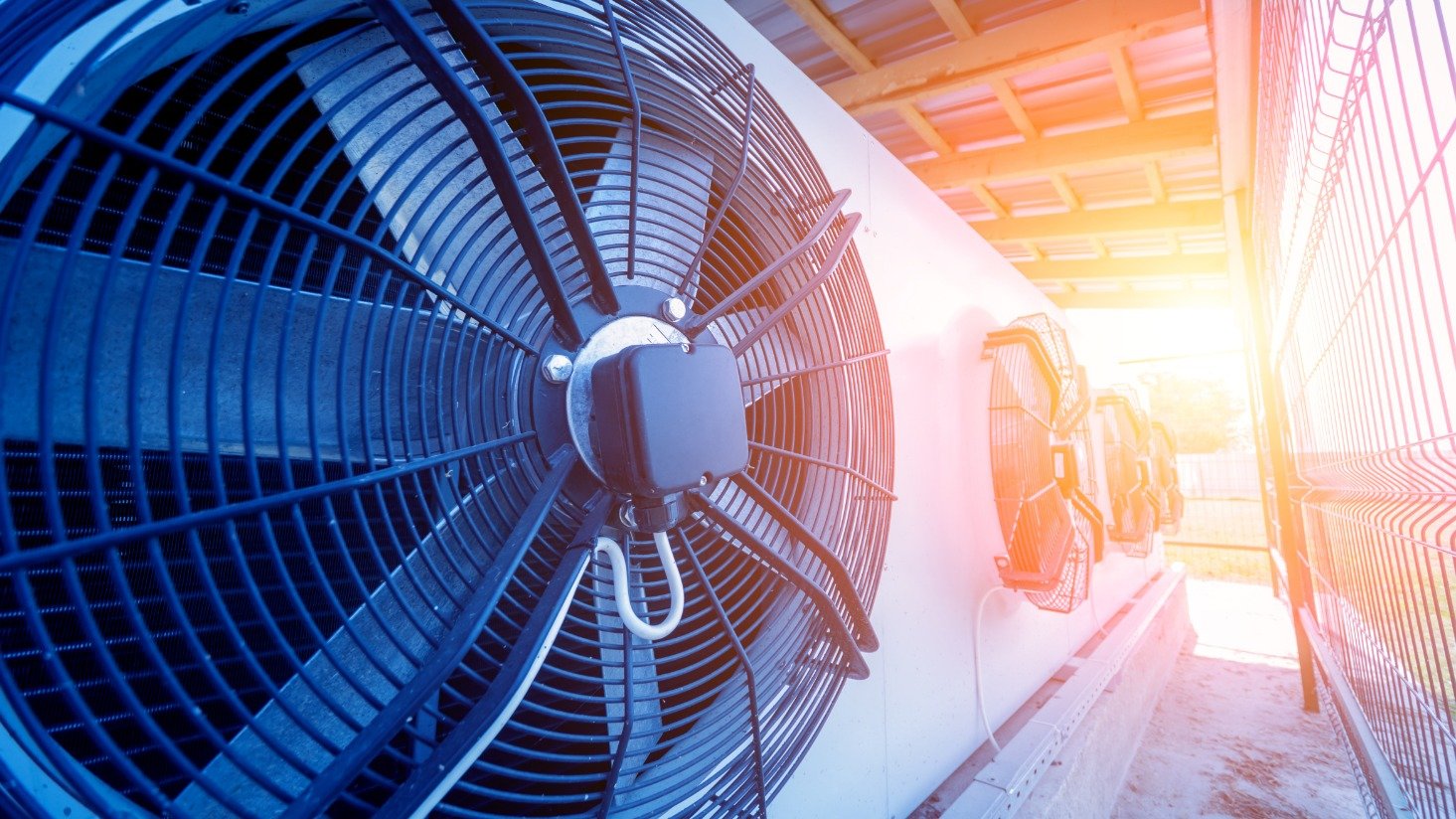HVAC vs upper-room germicidal UV: What's the difference?

Reopening has started around the country. People are starting to fill restaurants, retails stores, grocery stores, and other buildings again.
At the same time, cases of COVID-19 are still rising in many states.
As we look at ways to reduce the spread of the virus, one of the main challenges is reducing transmission and keeping occupied spaces clean.
Upper-air and HVAC germicidal UV fixtures both disinfect air, and can both be used in crowded areas. This is especially important because SARS-CoV-2, the virus that causes COVID-19, is mainly transmitted through airborne particles.
Which method is more effective? And what's the difference between them? First, to understand the differences it's important to understand how each application works.
What is upper-room germicidal UV?
Upper-room or upper-air UV fixtures emit UV-C rays above people's heads. These fixtures are placed on walls in occupied rooms.
The UV-C never comes into direct contact with our skin or eyes, so the fixtures are safe to run constantly (as long as they are properly mounted).
The image below shows how upper-air fixtures should work. They can only be used in buildings with ceilings at least seven feet high.
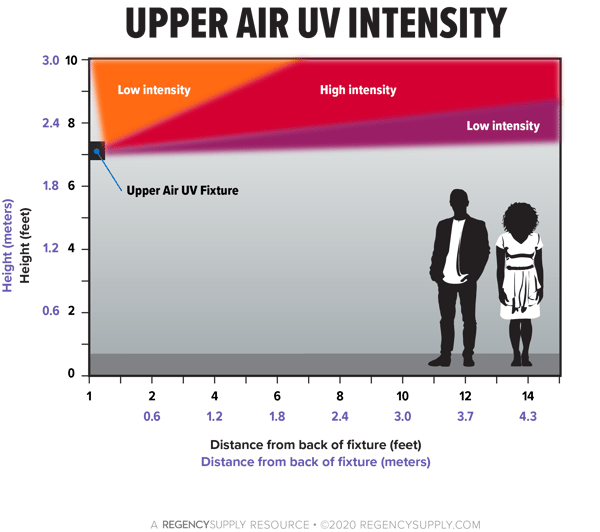
Even though UV-C light is only pointed at the air in the upper space of a room, it is very effective at disinfecting all of the air.
That's because there are constantly air changes in a room, where air moves from higher to lower areas. This happens naturally, even without the use of HVAC or fans, although HVAC and fans only help to increase the amount of air changes per hour in a room.
Pros of upper-air UV fixtures
- Extremely effective – Hospitals have used upper-air fixtures to reduce transmission of pathogens like bacteria for decades, specifically tuberculosis (TB). Studies showed an 80% reduction in transmission of TB with the use of upper-air fixtures.
- Safe – When fixtures are properly installed, there is relatively little risk of exposure to harmful UV-C rays. The highest chance of exposure happens during maintenance, so it's critical to make sure employees handling the units are properly trained.
- Runs constantly – You don't have to worry about stopping the units when someone walks in a room. These fixtures are designed and intended to operate in occupied spaces. That's especially beneficial during COVID-19, since the primary transmission is airborne.
Cons of upper-air UV fixtures
- No surface disinfection – Because UV rays are not pointed at surfaces, upper-air fixtures do not disinfect surfaces. That's not the intention of these units. For additional protection on surfaces, consider using UV fixtures or mobile units.
- Specific configurations – Upper-air fixtures do not work in every space. A ceiling height of at least seven feet is required. Plus, the units may not be a great option for more open spaces with larger square footage (although there are configurations that could work).
- Requires commissioning – We recommend commissioning for upper-air fixtures. There are a variety of factors that could impact installation, from louvers to reflective surfaces, and even the type of paint used on the ceiling.
How is UVC used in HVAC systems?
Using UV fixtures on HVAC equipment can benefit the entire system in two ways. First, the air entering and circulating through the building is disinfected and cleaner. Second, the entire system is healthier because UV-C also kills mold and fungus.
There are two main UV applications for HVAC equipment: in-duct and on-coil. The application that works best may depend on how much space is available.
The image below explains how an on-coil system disinfects the air supplied to your building.
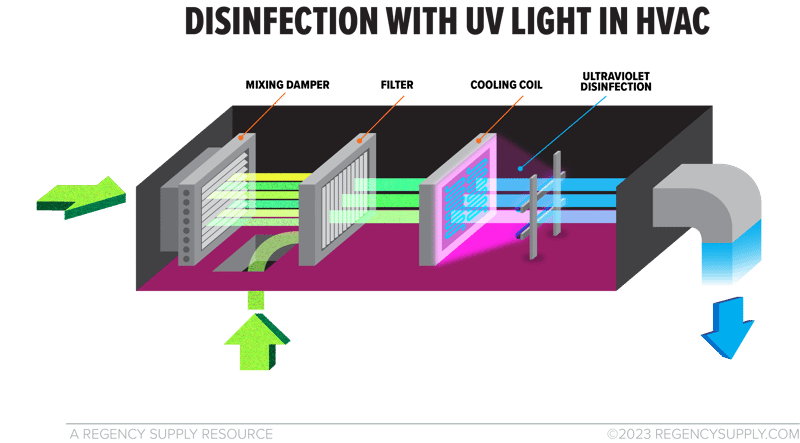
If space is limited, using an in-duct application might be a better option. Click here for a deeper dive into the different types of HVAC applications.
Pros for HVAC germicidal UV
- Reduced maintenance – UV-C rays that are cleaning the air are also getting rid of other unwanted pathogens that easily build up on HVAC equipment.
- Highly configurable – Certain fixtures, like those designed by American Ultraviolet, are highly configurable to fit the needs of your system.
- Runs constantly – Similar to upper-air fixtures, germicidal UV fixtures for HVAC equipment can run constantly. There is no threat of exposure to anyone in the building, unless the system is undergoing maintenance.
Cons for HVAC germicidal UV
- Lower transmission reduction – Although HVAC UV fixtures disinfect the air, they do little to prevent person-to-person transmission within rooms.
- Energy costs – You may notice higher energy costs because of the extra fixtures on your system. However, a cleaner HVAC system that runs more efficiently may offset some of those costs.
For more information on HVAC UV options, contact us.
HVAC vs. upper-air germicidal UV fixtures
Now that you understand the basics of HVAC and upper-air germicidal UV fixtures, we created the chart below for an easy comparison.
| Upper-room fixtures | HVAC fixtures | |
| Disinfects and cleans air |
✓ |
✓ |
| Reduces airborne transmission |
✓ |
|
| Runs constantly, even in occupied spaces |
✓ |
✓ |
Even though these options can both stand on their own, a combined effort of HVAC and upper-air UV fixtures would have the highest level of benefit for buildings.
But if you have to choose between HVAC and upper-air germicidal UV, hopefully you have a better understanding of how each of them work.
Other options for air disinfection
While HVAC and upper-air UV products are both good options, there are other fixtures that disinfect the air.
The UV FAN by Light Progress has a two-step disinfection process to continuously reduce the number of pathogens in the air.
First, air passes through germicidal UV enclosed within the UV FAN. The UV-C rays are not visible and never reach a surface.
Second, there is a titanium dioxide (TiO2) nano-structured photocatalyst (TiOx®) filter. The germicidal UV inside the unit energizes the titanium dioxide filter to get rid of pathogens in the air, providing an extra layer of protection against bacteria and viruses.
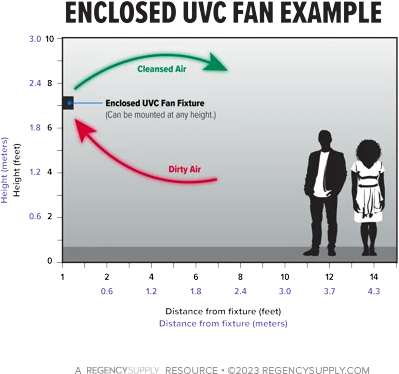 These products require little maintenance once installed. If you remove the cover of the unit, you can replace the long-life lamps. They are rated for 18,000 hours. The TiOx filters never have to be replaced.
These products require little maintenance once installed. If you remove the cover of the unit, you can replace the long-life lamps. They are rated for 18,000 hours. The TiOx filters never have to be replaced.
These fixtures are ideal for disinfecting the air in high-traffic areas like commercial, industrial, educational, health care, institutional, and other properties.
You have two options for the UV fan: a wall-mounted unit or a mobile unit.
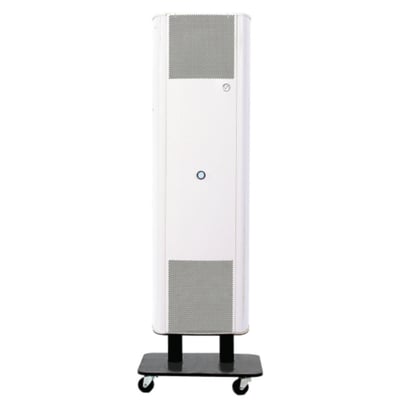 |
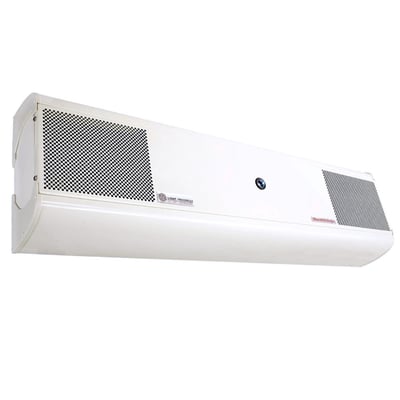 |
| Light Progress Portable UV FAN View product |
Light Progress Wall-Mount UV FAN View product |
There are several other types of UV products to consider as well. These mainly target pathogens on surfaces, and cannot run in an occupied space:
- Mobile UV units – These units usually have wheels and can move easily from room to room. They may require multiple run cycles to hit all surfaces in one area. Click here to read the pros and cons of mobile UV units.
- Tabletop units – Tabletop units are ideal for smaller spaces and smaller coverage areas. Click here to shop.
- Handheld and portable units - Handheld and portable units offer flexibility for small personal items, like cell phones and keys. Click here to shop.
For complete disinfection and protection, we can also help supply cleaning supplies and surface protectants, as well as PPE items like masks, gloves, and wipes.
The highest level of disinfection is the combined effort of cleaning, protection, and UV. If you'd like more information, contact us to speak with a lighting specialist.

